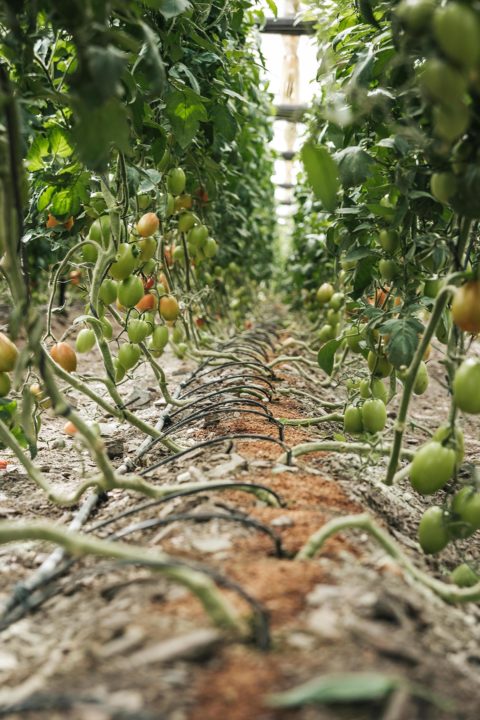Watch Out for Thrips in the Greenhouse This Season

Thrips feeding will result in leaf stippling and scarring.
Photo courtesy of Syngenta
Thrips are tiny, elongated insects that are known for wreaking havoc in ornamental production facilities. Adult thrips have feather-like long, narrow wings, while immatures are wingless. This pest can vary in size and color, ranging from yellow, red, black, or a combination, depending on the genus and species.
Many thrips are attracted to flowering plants, feeding on pollen, which is needed for reproduction. In the absence of flowers, they prefer to feed on other tender plant tissue such as young foliage and buds.
Controlling thrips can be a difficult task because of several biological characteristics:
- They prefer protected areas of the plant
- Their high reproductive rate and short life cycle
- Adults can fly and are easily carried into a greenhouse by the wind or on clothing
Threat of Virus Spread
Thrips feed by scraping and piercing plant tissue and sucking out the sap and cellular contents from leaf tissue, flower buds, and/or unexpanded shoot tips. This will result in leaf stippling, scarring, and distortion of flower and foliage. Feeding injury is particularly noticeable in the plant terminals and newly expanded leaves, as well as flower petals.
Physical injury is not the only way thrips cause damage. Many types of thrips can transmit tospoviruses, such as impatiens necrotic spot virus and tomato spotted wilt virus, which can quickly spread through a greenhouse.
Cultural Practices and Management
Controlling thrips in the greenhouse requires an integrated strategy of monitoring populations and utilizing proper cultural practices and effective control agents. Because thrips prefer to feed and hide in hard-to-reach areas of the plant, there are a few things you should do:
- Inspect new plants on arrival for evidence of thrips
- Use yellow or blue sticky cards in production areas for early detection
- Routinely check plants for thrips by brushing or tapping terminals and flowers over white paper to see activity
- Remove weeds within and around the production area where they can reside
In addition to cultural practices, thorough application of control treatments is critical for successful control, particularly with insecticides that work by contact activity. Apply products with systemic activity early in the crop cycle, such as Mainspring GNL insecticide, to keep populations from building to damaging levels. When applied as a drench, the systemic activity of Mainspring GNL provides extended protection of up to 10 weeks. Products with contact activity should be used as needed for spot treatments or prior to shipping to eliminate thrips in the flowers.
The injury from thrips is often noticed before the pest is physically detected in the crop. At this point, thrips populations are likely high and will be more difficult to control. The key to controlling thrips is to monitor the crop and production area weekly and be prepared with a rotation strategy that prevents populations from building to levels that will negatively impact the quality of your crops. Remember, it is more costly to fight the battle than to prevent it.
Learn more about thrips in the greenhouse and their control at GreenCastOnline.com/Ornamentals.
Footnote: Always read and follow label instructions. Some products may not be registered for sale or use in all states or counties and/or may have state-specific use requirements. Check with your local Extension service to ensure registration and proper use.










